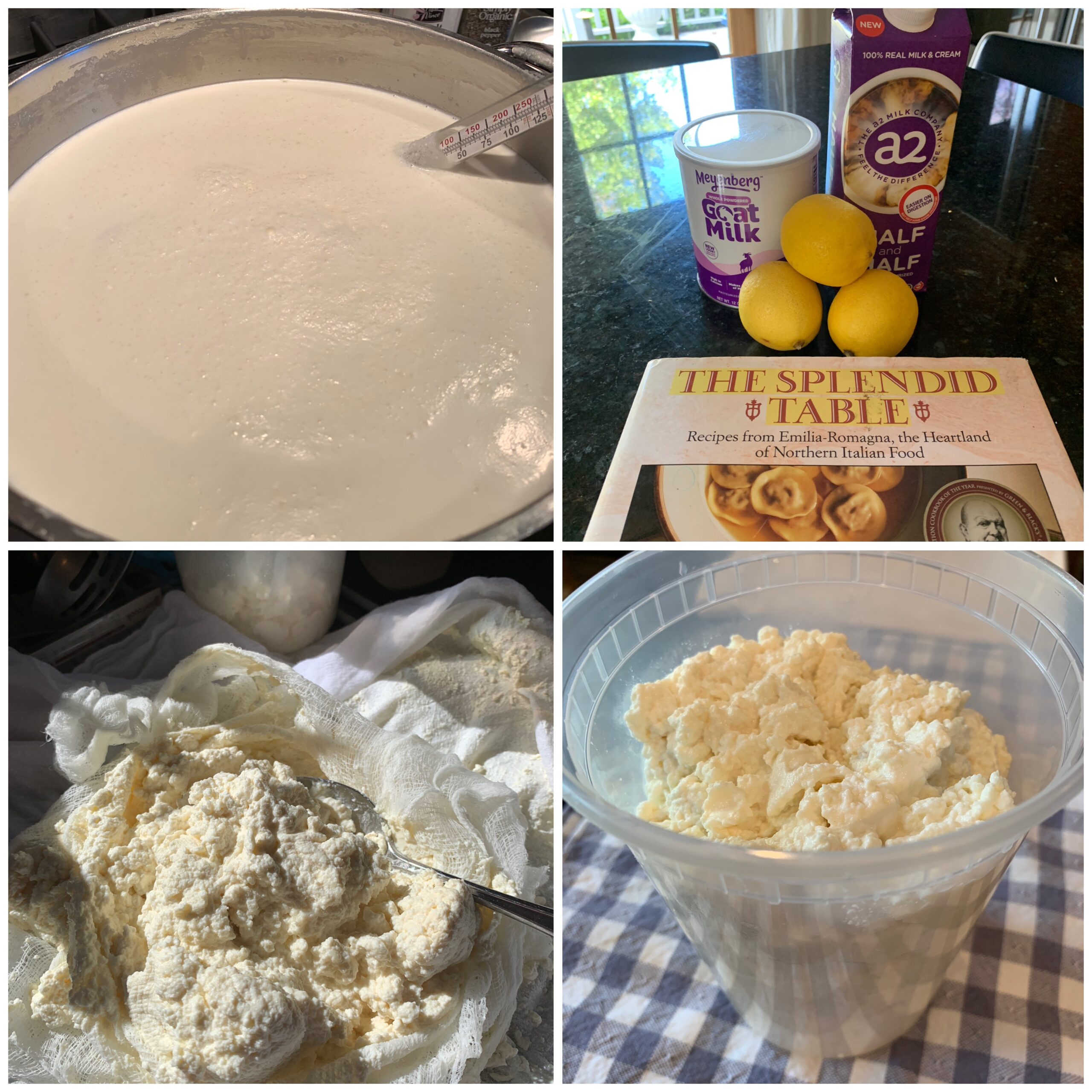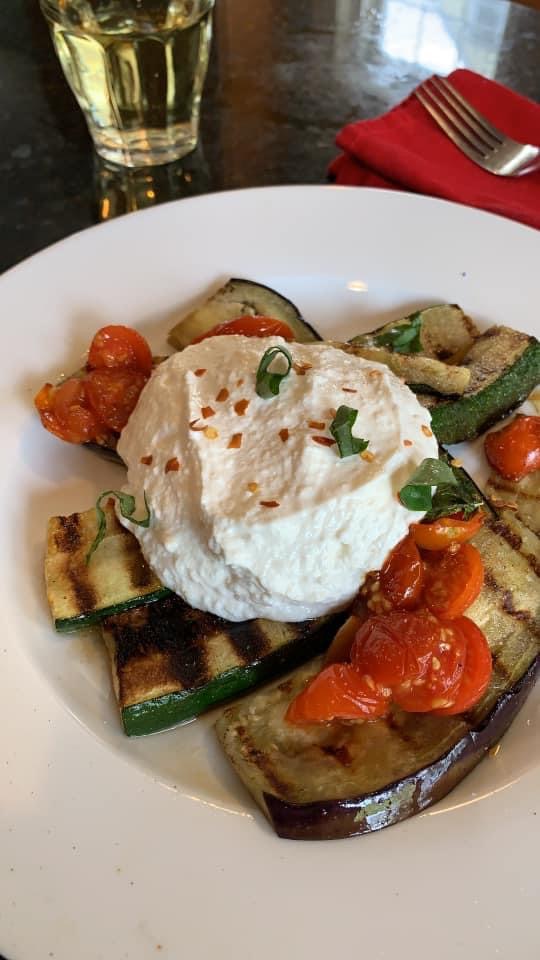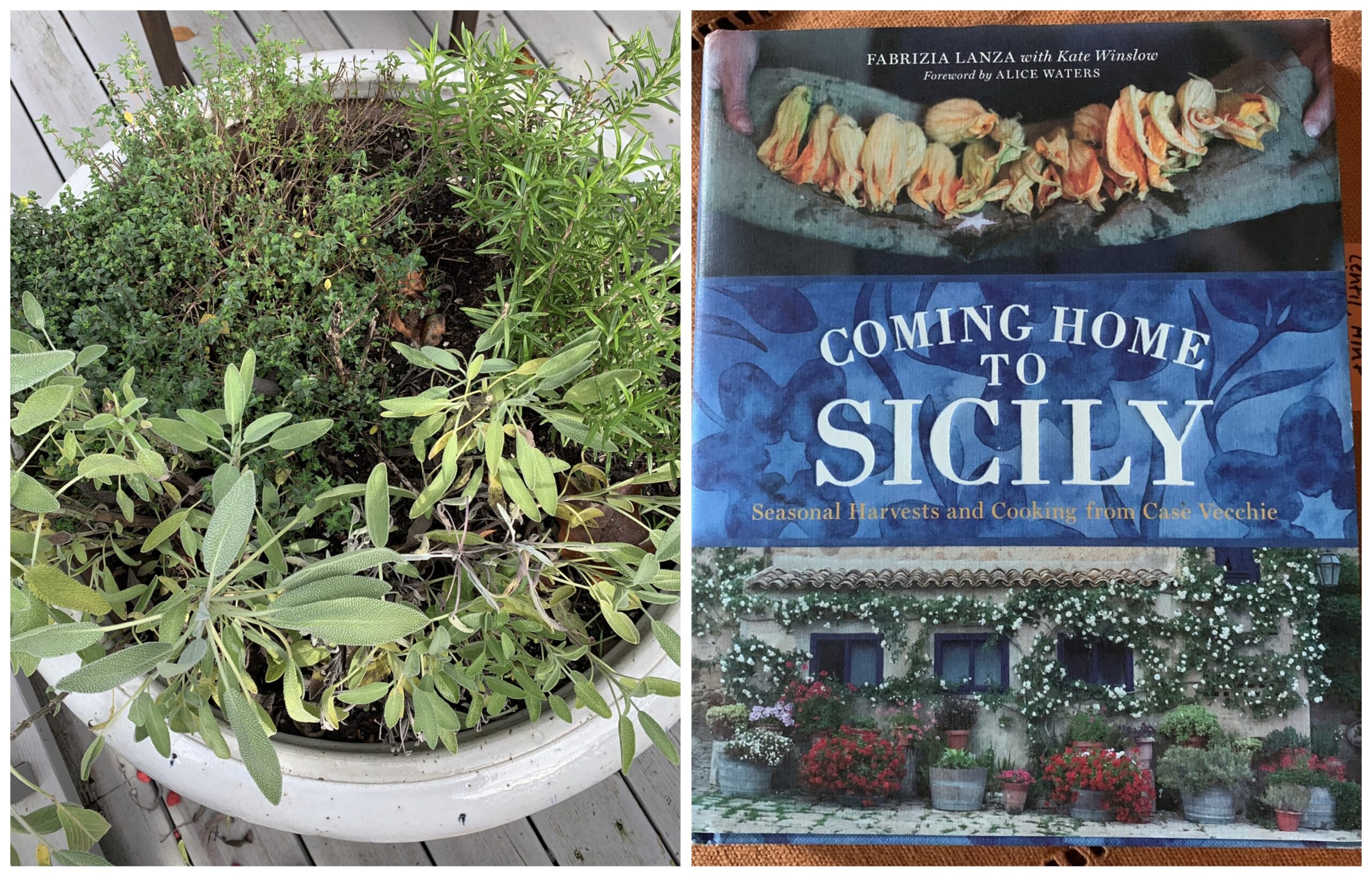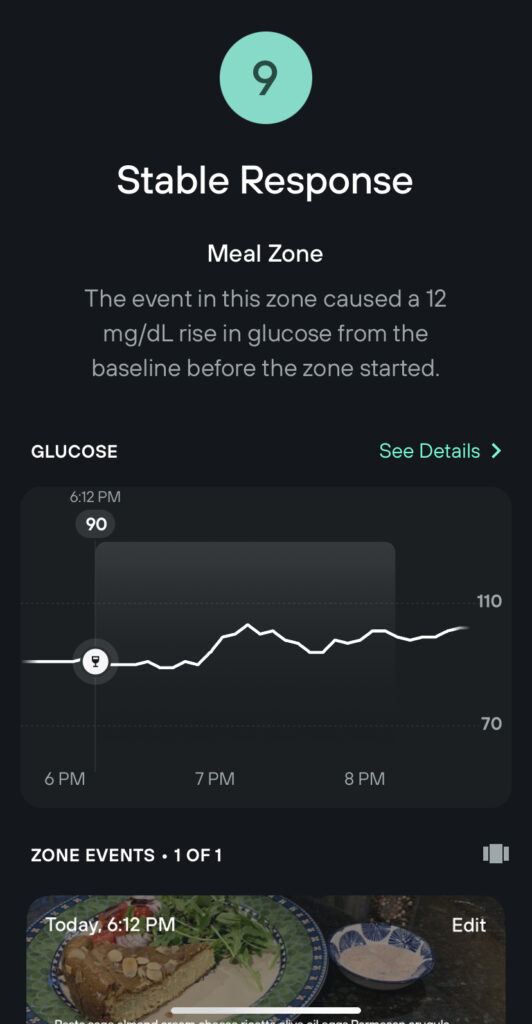Cu va a mannara mancia ricotta – Those who go grazing will eat ricotta. – Sicilian Proverb
There is nothing comparable to the freshly made sheep milk ricotta cheese that I tasted in Sicily, served as an appetizer at a winery located on the outskirts of the beautiful city of Noto. I’ve experimented with many recipes to recreate the flavor and texture of the ricotta embedded in my memory. Ricotta is actually a creamy curd made from the whey of sheep, goat, cow or Italian buffalo milk that dates back to the Bronze Age.
Ricotta has its health benefits: the protein, which has a complete amino acid profile, and calcium contribute to bone health. It is a good source Vitamins B-12 and A. In a half-cup serving, there are only 8.9 grams of carbohydrate, making it a low glycemic index choice at 27. Mindful of the intolerance or sensitivity to dairy for some individuals, as well as controversies about differences between A1 and A2 casein, I prefer to blend goat milk (which has A2 casein) with A2 half-and-half and add lemon juice (although some recipes call for distilled white vinegar) to curdle the milk.
The process is relatively simple, and it will take a little more than an hour to cook, curdle, and strain. Although this particular collection features recipes from the Emilia-Romagna region of Italy, I find the cooking instructions in The Splendid Table by Lynne Rossetto Kaspar easy to follow. Her suggestion to stir the pot very few times yields a creamier ricotta.
Homemade Goat Milk Ricotta
- Pour 3 quarts of fresh goat’s milk, or a full can of Meyenberg whole powdered goat milk mixed with three quarts of Acqua Panna in a heavy stainless-steel pot.
- Add 2 cups of A2 half-and-half.
- Squeeze, strain and stir one-third cup of fresh lemon juice into the milk.
- Clip a candy thermometer to the side of the pot and turn the heat to medium-low.
- Bring the mixture to 170 degrees Fahrenheit or 77 Celsius (~40 minutes). Do not stir the pot more than three or four times during this process.
- Once the pot reaches 170 degrees, turn the heat up to medium without stirring. In about 5-8 minutes, the mixture should reach between 205-208 degrees Fahrenheit (96-68 degrees Celsius). Place the thermometer in the center of the pot to get an accurate reading. Do not boil.
- Turn the heat off and let the ricotta stand for 10 additional minutes.
- Line a colander with a dampened cheese cloth over muslin, place the colander over another deep pot in the sink, and ladle the cheese mixture onto the cloth. The whey will run through the muslin.
- Let the cheese drain for 15 minutes on the cloth. When the ricotta cools, gently gather the corners of the cloth, squeeze to expel any remaining liquid.
- Put the ricotta into a container and add one-eighth teaspoon of salt if desired.
Here are two meals that are among my favorites because they are deeply satisfying, and both keep my glucose on an even keel.
Grilled Zucchini, Eggplant and Baked Ricotta
- Slice one medium size zucchini and one small eggplant into strips. Slice four cherry tomatoes. Marinate in olive oil with salt and red pepper flakes.
- Grill vegetables on a grill pan over medium heat.
- Prepare a pan with parchment paper and create two mounds of 1/2 cup of ricotta. Bake in an oven at 350 degrees Fahrenheit (176 Celsius) for a half hour.
- Arrange vegetables on a plate, top with baked ricotta and sprinkle with fresh oregano leaves and red pepper flakes. Serves two.
Fabrizia Lanza’s book Coming Home to Sicily, Seasonal Harvests and Cooking from Case Vecchie is a beautiful recipe collection with photos that invite you to visit the Regaleali estate, an oasis of golden fields near the Madonie mountains. I often make a savory pesto cheesecake in the summer with basil and pine nuts or walnuts. But I found the “Pesto di Mandorle e Salvia” recipe tantalizing and thought it might make an interesting variation.
Almond and Sage Pesto Savory Cheesecake
- Heat oven to 325 degrees Fahrenheit/165 Celsius.
- Bring all refrigerated ingredients to room temperature.
- Make the pesto: 1 cup of loosely packed fresh sage leaves, 1/2 cup of whole blanched almonds, 1 small garlic clove, 1/2 teaspoon fine sea salt, 1/2 cup of extra-virgin olive oil. Process in food processor until almonds are finely ground into a paste.
- Add five whole eggs to the food processor and blend.
- Add two eight-ounce packages of cream cheese and blend.
- Add 15 ounces of fresh ricotta cheese and blend.
- Add 8 ounces of grated Parmigiano Reggiano cheese and blend in food processor.
- Grease a 9-inch springform pan with olive oil and coat bottom and sides with a mixture of almond flour and Parmigiano Reggiano cheese.
- Pour the contents of the food processor into the prepared springform pan and smooth the surface. Top with sliced almonds.
- Bake for 75 minutes. Then turn off the oven, open the oven door slightly, and leave the springform pan in the oven for another hour. Cool to room temperature before releasing from the pan and serving. Serves 8.
This savory ricotta cheesecake is filling and makes a simple dinner with a side salad of arugula, grape tomatoes, and red onion dressed with olive oil and balsamic glaze. As I mentioned above, my glucose level stayed at an even keel with little variability. The proof is in the ricotta!
♥ Susan L. Ward
Integrative Nutrition Health Coach





